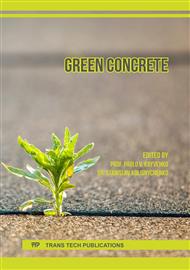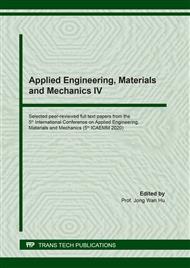p.39
p.45
p.55
p.61
p.67
p.73
p.79
p.85
p.91
Rheological Behavior of Self-Compacting Geopolymer Concrete Containing Recycled Aggregates: Effect of Na2SiO3/NaOH and Molarity of NAOH
Abstract:
To develop a sustainable concrete and to minimize the depletion of the natural resources, an attempt was made to develop sustainable concrete mixtures benefiting from the geopolymer technology and the use of recycled aggregate in self-compacting geopolymer concrete (SCGC). This study aim to examine the effects of sodium hydroxide (SH) molarity and sodium silicate (Na2SiO3)/ sodium hydroxide (SS/SH) ration the fresh properties of SCGC mixtures containing recycled coarse aggregates (RCA) Mixes were prepared with three different molarity (8M, 10M and 12M) of) and four SS/SH ratios (1.5, 2.0, 2.5 and 3.0). Six mixes were examined in this study. The results were compared with the EFNARC limits for self-compacting concrete (SCC). It was found that the SS/SH ratio and the molarity of SH affect the fresh properties of (SCGC). However, the results showed that, SCGC mixtures containing RCA can be developed and satisfy the requirements of EFNARC for fresh state of SCC.
Info:
Periodical:
Pages:
79-84
Citation:
Online since:
January 2021
Authors:
Price:
Сopyright:
© 2021 Trans Tech Publications Ltd. All Rights Reserved
Share:
Citation:



